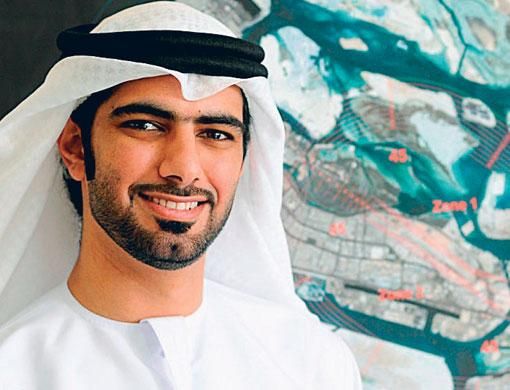Abu Dhabi: Any new building or project that seeks to get a planning permit to kick off construction in the capital will need to comply with green building regulations, officials announced recently.
The move aims to ensure that all upcoming projects will have a minimum level of sustainability imbued into it.
However, international green building regulations have not been imported directly. They have been modified to suit the city, keeping in mind the high water and energy consumption patterns which contribute to the large ecological footprint of the country. The fact that in the World Wildlife Fund's Living Planet Report of 2008 the UAE was ranked as the country with the world's largest ecological footprint per capita (in 2005) reflects the need to switch to sustainable living.
Salem Al Qasimi, Associate Planner at Estidama, which is in charge of setting the codes for promoting sustainable building, explains: "Abu Dhabi's green building regulations have more stringent water and energy conservation requirements than international systems." Al Qasimi spoke to Gulf News about the Estidama initiative.
Gulf News: What is Estidama?
SALEM AL QASIMI: Estidama, which means "sustainability" in Arabic, is an initiative developed by the Abu Dhabi Urban Planning Council (UPC) to imbue a new mindset that promotes the concept of living in harmony with our culture and environment while conserving our way of life so that future generations can benefit from our wise choices. Based on the four pillars of environment, economy, society and culture, Estidama supports sustainable living and resources by working closely with communities, organisations, businesses and policy-makers to further encourage responsible decision making.
As an ultimate aspiration, Estidama will set a new global sustainability benchmark that will eventually be embraced by other forward-thinking nations around the world in order to safeguard the future of our planet.
What are the objectives of Estidama?
The Estidama initiative has to be considered in relevance to Plan Abu Dhabi 2030 of which it is a driving force. Plan Abu Dhabi 2030 is designed to help Abu Dhabi respond to current and future development needs, establish a culture and introduce strong guiding principles for new development.
Accordingly, Estidama advocates sustainable planning and living as the essential ingredient to the long term success of the Plan.
It aims at higher levels of sustainable design and practice by getting the design process right from the beginning to ensure the desired level of sustainability is time and cost-effectively achieved.
How will it help the city's residents?
At the heart of the Estidama programme is our Pearls Design System which encompasses buildings and community design guidelines and rating systems. Fully implemented, Estidama will help residents of Abu Dhabi live in harmony with their environment and culture through building healthy communities, sites and buildings, reduce pollution and energy consumption, integrate renewable energy, and preserve natural resources. Together this would also help in reducing the monthly bill they pay for public utilities.
One powerful, specific example of the positive impact of the guidelines is the positive impact on public health through requiring use of healthier building materials.
By reducing the volatile organic materials in a building, it is believed that asthma ... in children and the elderly can be reduced. Recent studies have shown that one in five children in the UAE [suffers from] asthma, which shows the importance of the guidelines.
What are the procedures for accreditation of a building?
On the regulatory front, all new buildings and communities which apply for planning permission in 2009 will have to show proof that they engaged in Estidama Integrated Design Process (EIDP). Additionally, Estidama is working with the municipal affairs department to develop Estidama prerequisites to be embedded into the new International Code Council Building Code which Abu Dhabi is currently adopting.
Once this process is completed, all buildings in Abu Dhabi will have a much higher bar for sustainability.
What are the benefits of EIDP?
Often sustainability experts are not brought in until so late in the design process that developers can't actually achieve high sustainability without incurring additional cost. EIDP will embed basic sustainability principles in development codes and regulations ensuring that every future project in Abu Dhabi achieves higher levels of sustainability through simply meeting code. Thus using EIDP helps save time and reduce cost.
What is unique about the Estidama and its Pearls Design System?
Estidama is unique because it focuses on process and not checklists. It is time for a different approach to integration of sustainability concerns - one where we teach how to achieve the end results versus simply giving people checklists.
The concept was developed for this region and is tailored to meet Abu Dhabi and the region's particular environment, culture, society and economy. Our guidelines have much more stringent water and energy conservation requirements than any other currently published international system. Implementing our collaborative approach, the guidelines have been developed by our experts and discussed with all concerned parties to secure full collaboration and adherence.
Are investors given any incentives for choosing sustainability?
EIDP as an approach is itself a real incentive, as it saves investors time and money and streamlines their efforts in meeting all procedures and conditions. Our approach is collaborative and interactive with investors being our main stakeholders.
What are the challenges faced by the authorities in going ahead with Estidama?
As a relatively new concept and approach in the region, we understand that constant communication efforts should be exerted to educate various stakeholders on the vital importance of Estidama for a quality life in Abu Dhabi at present and in the future. The communication efforts we've done so far have proved very fruitful and instructive, which resulted in stakeholders' supporting our cause.
We are actively engaged in educating various stakeholders through training sessions.













